Vinyasa Yoga Manual


YMCA Fitness Training Industry 111 Great Russell Street London WC1B 3NQ www.ymcafit.org.uk



YMCA Fitness Training Industry 111 Great Russell Street London WC1B 3NQ www.ymcafit.org.uk
YMCAfit is a CIMSPA Training Provider Partner and are authorised to have this training module recognised and assigned Continuing Professional Development (CPD) points by CIMSPA

All rights reserved. Without limiting the rights under copyright reserved above, no part of this publication may be reproduced, stored in or introduced into a retrieval system or transmitted, in any form or by any means (electronic, photocopying, recording or otherwise), without the prior written permission of the copyright owners of this resource.
Vinyasa is one of the most popular styles of Hatha yoga in the western world. The most common understanding of vinyasa is that it is a linking of asana together with the breath to create a flowing, fluid sequence.
The Vinyasa krama approach integrates the mind, body and breath together to create a sense of Dharana/one pointed concentration, in order to move closer to the aim of yoga, bliss state or Samadhi. We should think of it as a “moving meditation”, cleansing the physical body and building up our store house of prana (vital energy) .The word krama means “succession” so a sequence is created, one asana after another with the breath as the thread.
Everything in life has a “flow” or “sequence”. The seasons, the tides of the sea that are aligned to the cycle of the moon, even our human lives have a cycle. When we focus on the breath moving through the body our minds are quieter and we become more present, more here, more now.
The Yoga Korunta or Kuruntha by Vamama Rishi is a 5,000-year-old written text, a “Book about Yoga”
This book was said to contain several descriptions of grouping asana together as well as original teachings of Vinyasa, Bandha and Mudra.
This was written in Sanskrit and discovered in the early 20th century by Tirumalia Krishnamacharya. It is later stated that no account of this could be located after this time as Krishnamacharya’s only copy was “eaten by ants”. Krishnamacharya then passed down the teachings he had learned from this ancient text to his students at the time Sri K.Pattabhi Jois and B.K.S Iyengar. It is claimed that Jois used it as inspiration to form his own system of yoga “Ashtanga Vinyasa Krama”.
This style of yoga as created by Sri K. Pattabhi Jois in Mysore, India, follows a set sequence of asana in which “Vinyasa” or flowing sequences connect the asana together.
The practice begins with two Sun Salutation sequences or Surya Namaskara A & B. These are followed by grouped asana sequences, for example, standing sequence, balancing sequence, twisting sequence. Each of these sequences are connected with a vinyasa. There are six series within this system: Primary, Intermediate, Advanced A, B, C and D.
In Ashtanga Tristana, which means “three places of action or attention”. These are Ujjayi Pranayama/ breath practice, Mula Bandha / root lock and Drishti/looking place. They cover the three areas of purification the body, nervous system and mind.
The Bandhas are also an integral part of Ashtanga yoga, they not only unlock and direct pranic energy around the body but are also essential for the practice of Ujjayi breathing. Without bandha control “breathing will not be correct, and the asanas will give no benefit” (Ashtanga yoga)
Desikachar, Krishnamacharya’s son who was also a very well renowned teacher wrote, “Vinyasa is, I believe, one of the richest concepts to emerge from yoga for the successful conduct of our actions and relationships.”
For millennia, man has worshipped the sun. In Hindu mythology “Surya” is the sun, the original giver of life. Namaskara means “greetings” or “salute”. Although Indian tradition connects a 17th century saint with Surya Namaskara, there was no definition of what movements were involved.
Anthropologists claim that SS was not recorded in any Hatha yoga text before the 19th century. In the early 20th Century the Rajah of Aundh popularised the practice in his book “The Ten-Point Way to Health” published in 1928.
Many vinyasa classes start with Sun Salutation sequence, this basic sequence of 9 or 12 postures are then used to connect the flow between longer held asana or asana of a specific type according to the theme of the class.
The Surya Namaskara is a sequence of asana that are very familiar to many yoga teachers and practitioners. The sequence generally starts with Tadasana/ Mountain pose and includes , Bhujangasana /cobra pose , Adho Mukha Svanasana /downward facing dog and Uttanasana/standing forward bend. It is a sequence of forward and backward bending asana that counter posture each other to create warmth in the body and stillness in the mind, connecting breath and movement. Traditionally this sequence would have been practiced in the morning with the rising of the sun, the sun’s rays were thought to affect the seven chakra points in the body.
In Ashtanga Vinyasa Krama there are two Surya Namaskara sequences A & B. They are practiced at the very start of the class; A is a gentler sequence to warm the body, B then builds the intensity. Surya Namaskara A is then practiced throughout the whole class linking the longer held poses. In most vinyasa classes Surya Namaskara A & B are widely used.
The lineages of yoga that teach Surya Namaskara have their own unique way of teaching these sequences using different postures however there are generally made of nine to twelve poses.
Here are two examples of more traditionally taught sequences.
Position
Asana Breath
Tadasana/ Mountain pose Exhale
Urdhva Hastasana /extended mountain pose Inhale
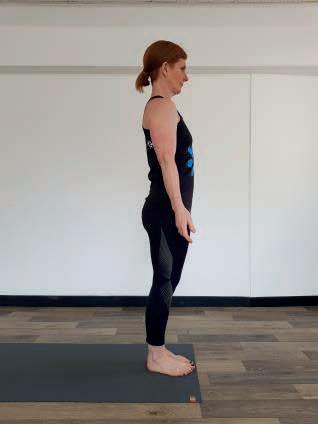
Uttanasana/standing forward bend Exhale
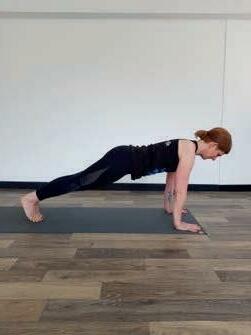
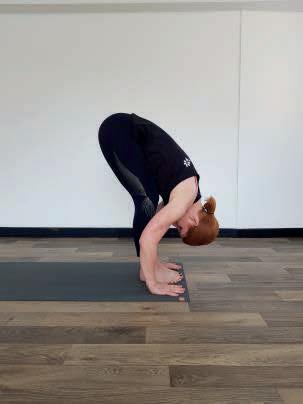

Ardha Uttanasana/half forward bend Inhale
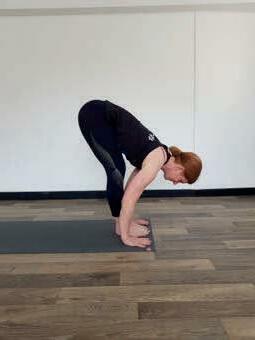
Phalakasana /plank Inhale
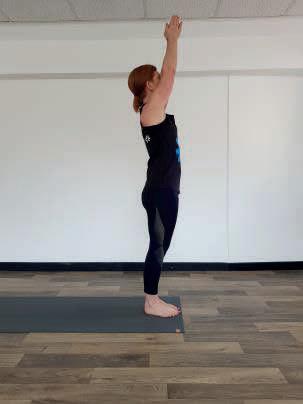
Chaturanga Dandasana or Ashanta Namaskara / eightpoint pose Exhale
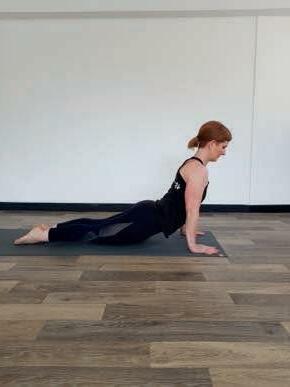
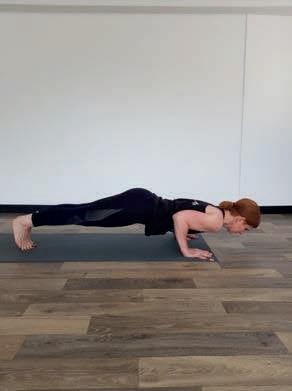
Bhujangasana / cobra or Urdhva Mukha Svanasana/ Upward facing dog Inhale
Adho Mukha Svanasana/ Downward facing dog Exhale

Ardha Uttanasana/ half forward bend Inhale
Uttanasana/ standing forward bend Exhale

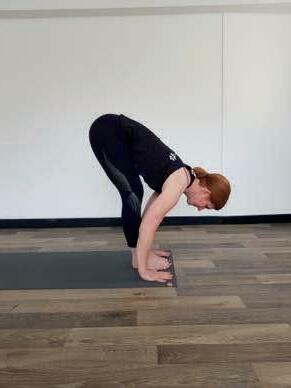
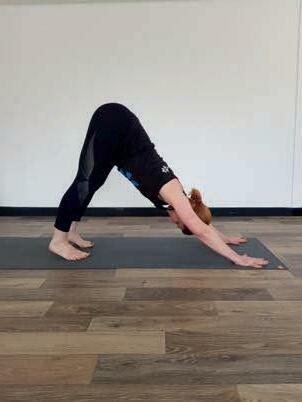
What are the modifications, progressions and contraindications for these poses?


Practice teaching these sequences.

Position
Asana Breath
Tadasana/ Mountain pose Exhale
Urdhva Hastasana /extended mountain pose Inhale
Uttanasana/standing forward bend Exhale

Anjaneyasana / kneeling lunge Inhale




Khumbakasana / plank Retain
Chaturanga Dandasana or Ashtanga Namaskara / eightpoint pose Exhale
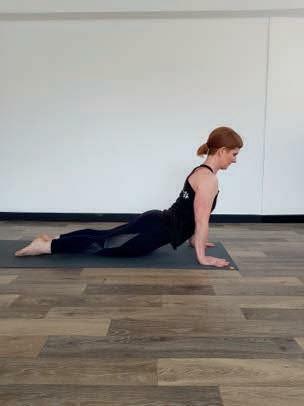
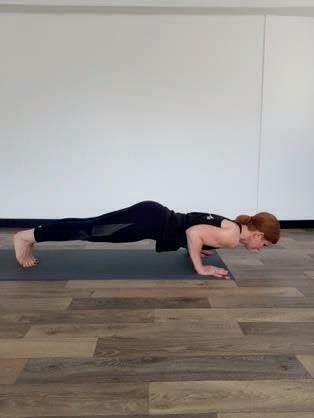

Bhujangasana / cobra or Urdhva Mukha Svanasana/ Upward facing dog Inhale
Adho Mukha Svanasana/ Downward facing dog Exhale
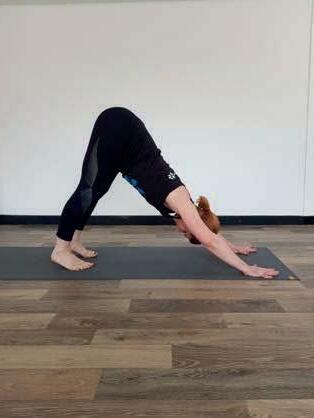

Anjaneyasana / kneeling lunge Inhale


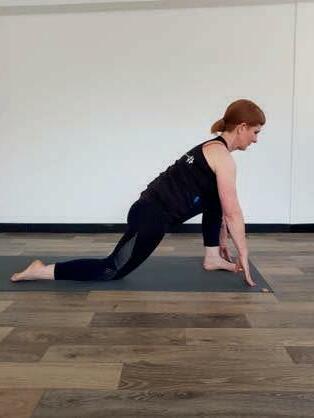

Uttanasana/ standing forward bend Exhale

Urdhva Hastasana/ Extended Mountain Pose Inhale
Tadasana / Mountain Pose Exhale


So, where do you start? Let’s look at the structure of a typical one-hour class. Arriving and centring. Setting an intention. Warming and awakening. Building and maintaining intensity. The main event “peak” pose or poses. These poses to add to the basic Sun Salutation, is there a theme or a peak pose? This must be built into the warming and awakening and the build-up sequences to prepare the body safely and effectively. Balancing the practice, neutralising and counter poses. Closing the class, Final relaxation, pranayama, meditation, closing prayers.
What is the structure of the classes you practice or teach?
Most people come to yoga to reduce stress and anxiety in their lives, as well as to improve their own physical strength and flexibility. We know that the same strength and flexibility is also built in the mind, that is one of the unique gifts of our yoga practice. Patanjali refers to “Sthiram” steadiness and “Sukham” ease, we are looking to cultivate these two qualities throughout our practice.
When students arrive at their class, they are often very mentally distracted. They may have had a busy, stressful working day, they may be feeling lethargic and tired. So, at the start of the class there should be time to set to one side these distractions or even set expectations they may have for the class ahead. To bring more focus to being still and quiet and create a breath connection. Starting the class seated, lying down or even standing, begin to create a stable, but comfortable position. If starting in a seated position encourage the use of a block or bolster for more comfort, then there will be less distraction. Ask students to start to turn their attention more inward, focus on the connection they have with the ground, and the sensations and movement of their breath. As they feel more at ease, encourage deeper breathing and offer the practice of Ujjayi pranayama*. New students or beginners should begin with simply becoming more aware of their breath, before moving to nasal breathing.
*Please note Ujjayi Pranayama is described in more detail on pages 37-38.
In Vinyasa, the breath is a medium for developing the idea of Pratyhara/sense withdrawal and Dharana/ one pointed concentration. It acts as a barometer for the practice, the breath should be smooth and even, not restricted. If the breath becomes difficult or restricted it is a sign that maybe we need to slow down, reduce intensity or even rest until the breath is under control again.
As a teacher you may wish to bring focus to the class in a special way, such as;
Share the theme or point of focus you have for the class.
Reading a quotation or a poem.
If your class has a theme maybe there is a mudra you could concentrate on or a chant you could lead.
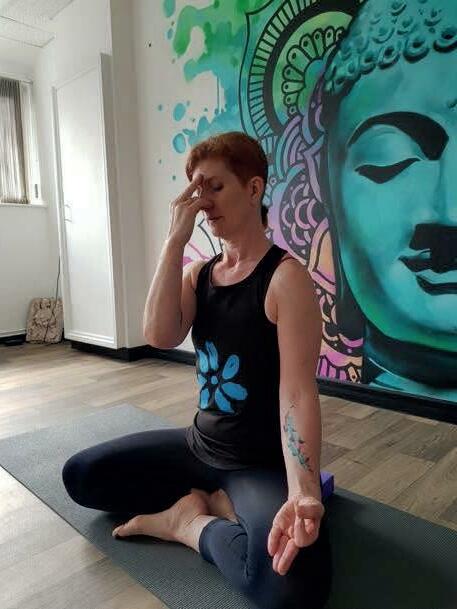
Lead the chant of “AUM”.
Sitting for a short-guided meditation.
Sankalpa is a Sanskrit word for making a pledge or having an intention to make changes at a physical, mental, or spiritual level.
This term comes from the Sanskrit roots san, meaning "a connection with the highest truth," and kalpa, meaning "vow." Thus, it translates to denote an affirming resolve to do something or achieve something spiritual. Often yoga practice can help an individual uncover and cultivate their own Sankalpa in order to achieve enlightenment. “
For mental and spiritual wellbeing Sankalpa is usually made during meditation as the mind is connected to the subconscious level and they are more powerful if they are made when connecting at a subconscious or superconscious level
An example for mental wellbeing " I am positive" or " I am confident"
An example at a spiritual level Sankalpa could be "I will do one good deed a day" or "I will help without any expectation"
This should not be thought of as a 'goal', not as something that we need to personally accomplish. It is something that should direct us inward towards our heart's highest intention, linking us with the universal will, not that of the individual. It is a positive declaration or affirmation; this may stay the same for our whole lifetime or frequently change.
Here are some other examples of a Sankalpa: I feel happiness and joy in my life and wish that same joy for all. My heart is full of love for the world and all beings upon it.
Think of some intentions that you have used before in your classes.
Think of some intentions you may like to suggest in your classes.
We need to gradually warm and awaken the body to increase mobility, flexibility and slowly increase the heart rate. We also need to generate “Tapas” or inner fire to build a sense of discipline for our practice. Depending on the class ahead, its theme or focus and your intention, there are many ways to warming up. The initial teaching of Ujjaiy breathing will have already begun to create some internal heat, now more movement can be introduced in different ways:
A mini version of Sun Salutation, all based on lying and kneeling postures.
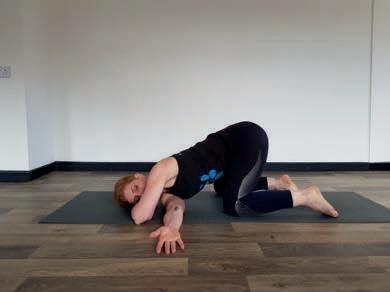
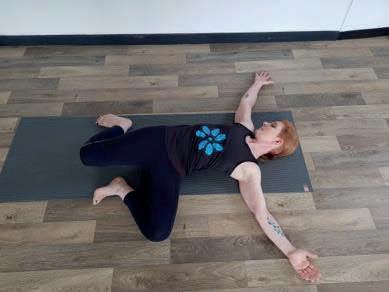
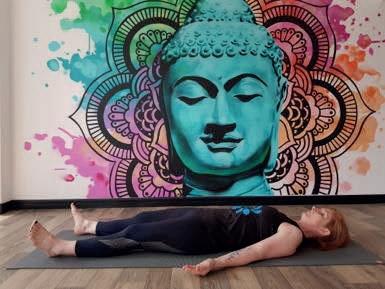
Cat and cow sequence, moving into an easy downward facing dog.
Easier versions of the postures included in the main body of the class.

Taking the body through the same ranges of movement that it will be moving through in the main body of the class.
Creating a slow mobilisation of the spine and its attachments
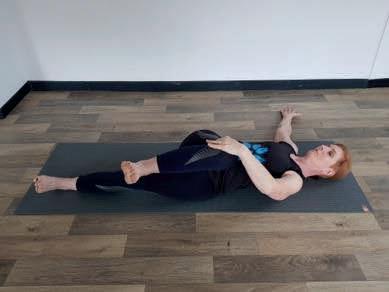


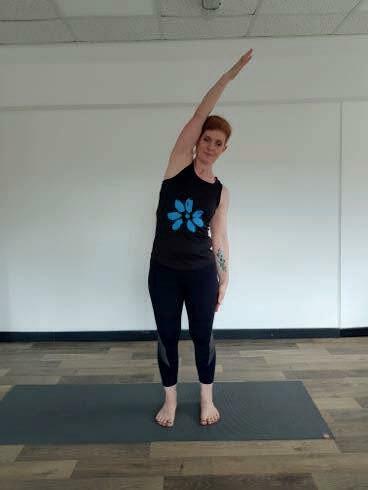

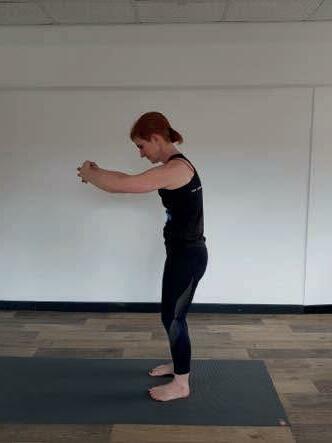
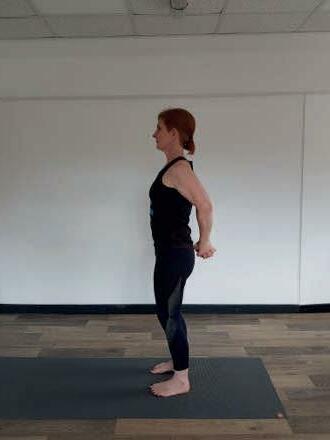

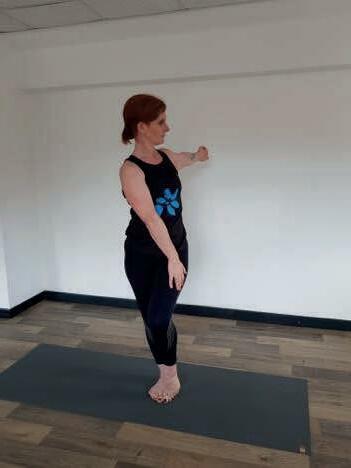


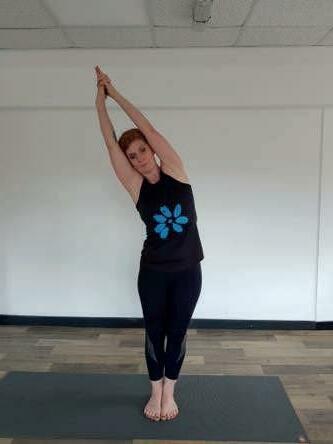
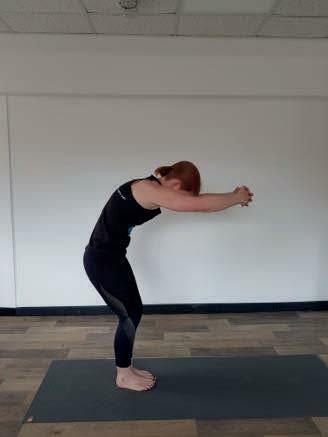
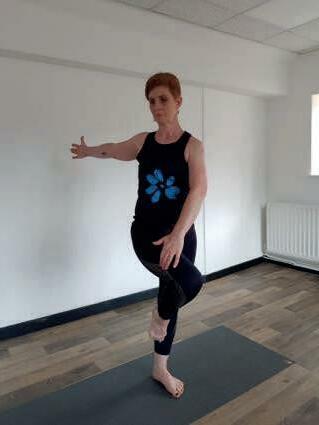
Design your own start to the class including arriving and centering, warming and awakening.

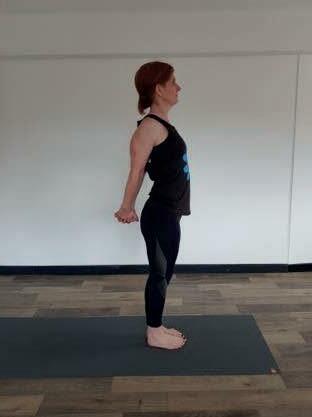

Once the body has been physically warmed up and the mind is becoming more focused, it’s time to increase the intensity and build the sequence or vinyasa. This is the sequence or sequences that are going to lead us to the “peak” asana or asanas. Now it’s time to think about the components that make up the peak pose/ poses:
What is the asana type i.e. a twist, a forward bend?
What joint actions are involved? Deep thoracic spinal extension, deep hip extension or flexion?
What needs to be open in the body, what muscles are being stretched. For example, a challenging back bend like Dhanurasana /bow pose. The hip flexors, external rotators, abdominals, chest, shoulders, internal rotators of the arm, elbow and wrist flexors all need to be open.
Which more basis asana can be used to prepare for the more challenging peak poses?
What is the foundation of the pose? What part of the body is on the floor, what needs to be stable and how can we increase that stability? This may be helped by using props, blocks to sit on or bricks under the hands or more specific verbal teaching cues “shrug shoulders “ .
How is the peak pose aligned? Which more basis poses have that same alignment? Without practicing warrior 2 first, how can we safely and effectively move into extended side angle pose?
How does one pose flow into the next in a safe and effective way, does the sequence “work”?
Most of these asanas will be threaded on to a basic sun saluation sequence in order to keep the “flow” of the class and continue to build heat and intensity. This could start with one or two rounds of Surya Namaskara A, then asana can be threaded onto that sequence using the above suggestions. The peak asana can then be added to this sequence and held for a longer period of time before flowing back through the sequence and adding more. It is also worth remembering to remind students that if they are unable to practice the peak asana, they can simply chose to stay in the slightly less challenging variation of the pose.



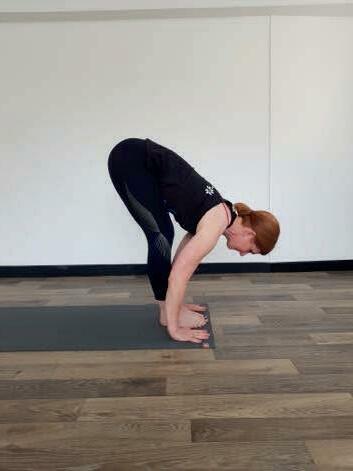
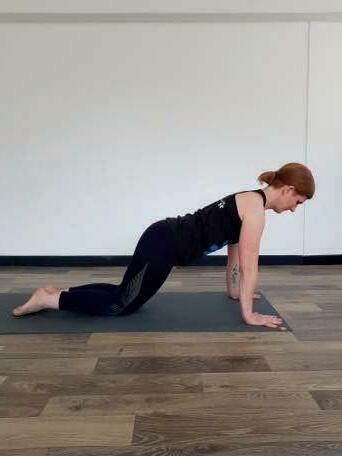

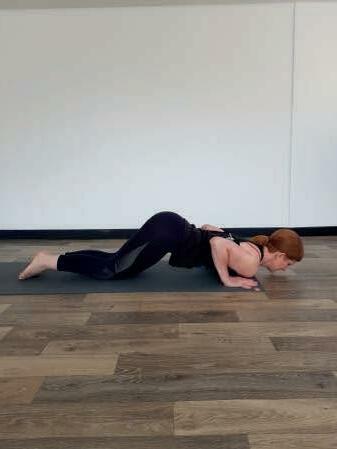
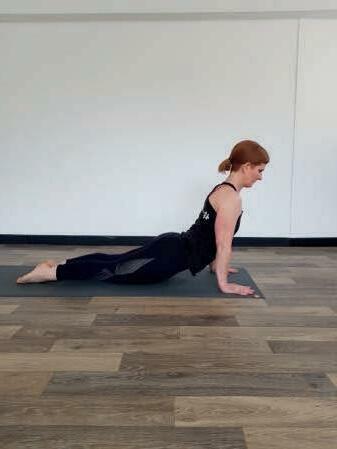
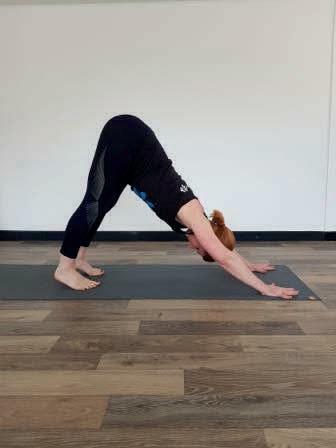

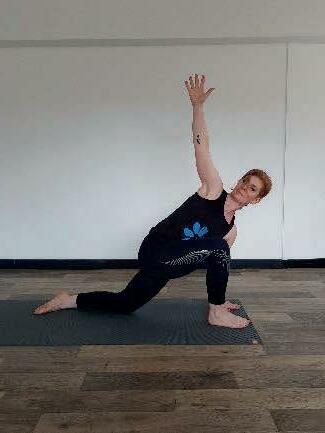
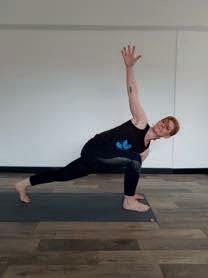
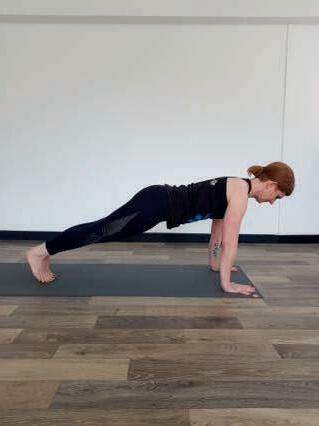
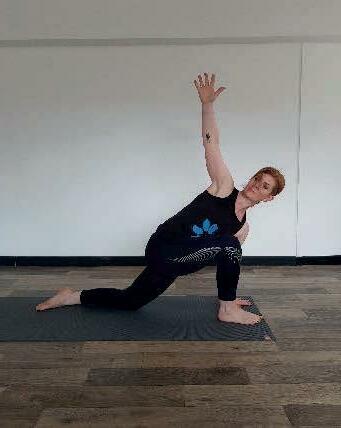




This is really where the class planning must begin. It is only when we know where we want to go in a class that we can begin to plan how we get there. All the elements that make up this pose or these poses must be included in some way in the build-up sequences and the warmup. Once we have intelligently designed the build-up, the peak poses should simply evolve. These poses should be more physically and mentally challenging, however because they have been “broken down” in the build-up they should be more accessible to all. There are many poses that can be taught at this stage in the class depending on the style, theme and ability of the class. These peak poses can be from any family of asana, back bends, arm balances, twists etc and can be part of a theme or focus.
Here are some examples of themes:
Asana families: Standing balances, back bends, twists.
A peak pose, threading in some philosophy or mythology i.e. Hanumanasana “Monkey God pose”. The Chakra’s.
Seasons, a practice to balance out the heat of summer or cold of winter.
A practice based around yoga philosophy i.e. The Sutra’s Yama’s and Niyama’s.
The elements of fitness, strength, endurance, flexibility or core strength, upper body, lower body strength.
A specific health condition or as a preventative practice: menopause, osteoporosis, balancing. Do consider that if you advertise a class for a specific condition you may require extra training *




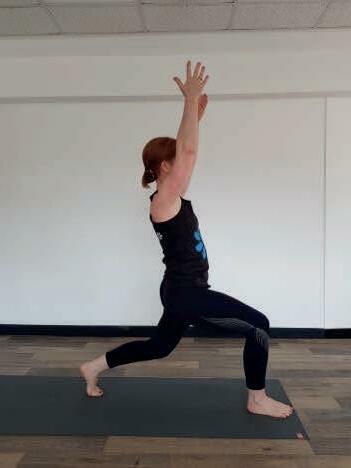
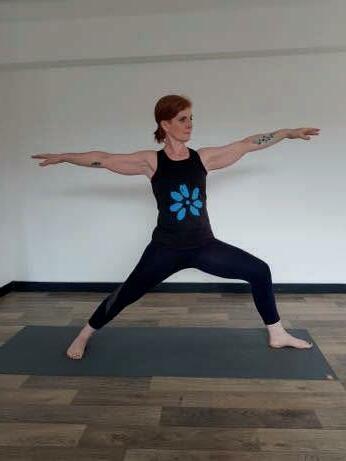
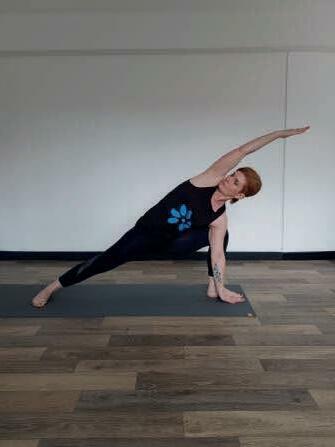
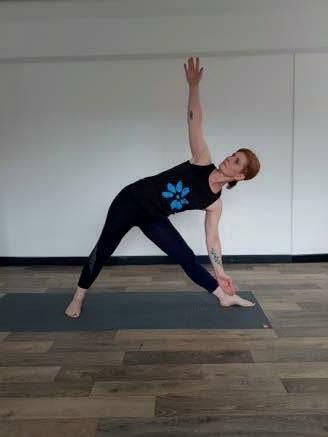
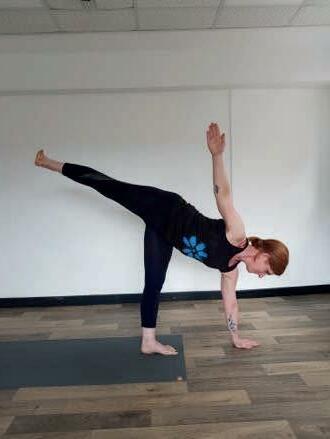
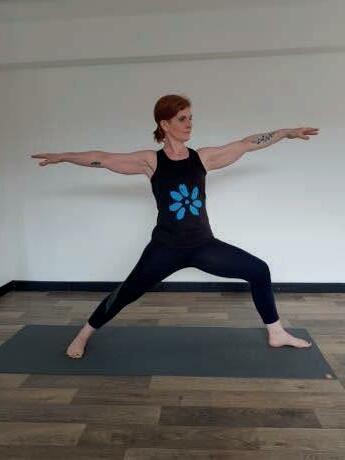


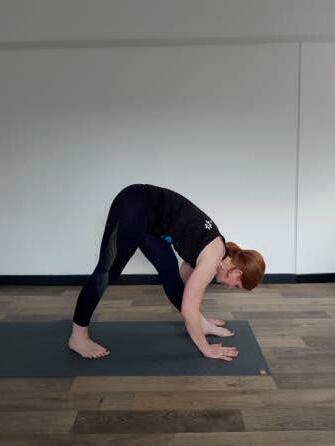
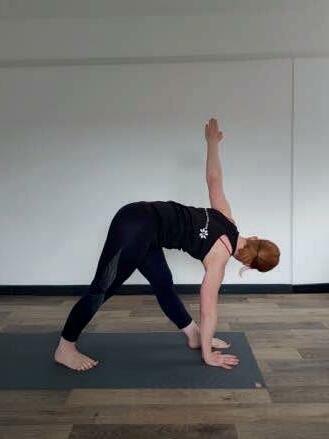
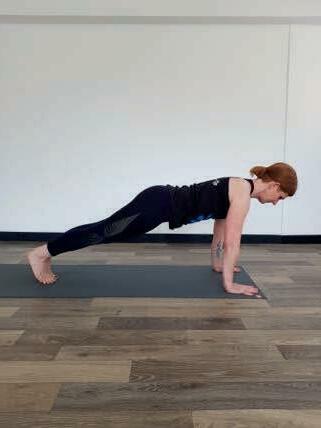
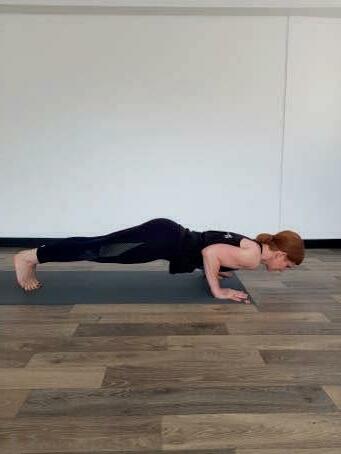

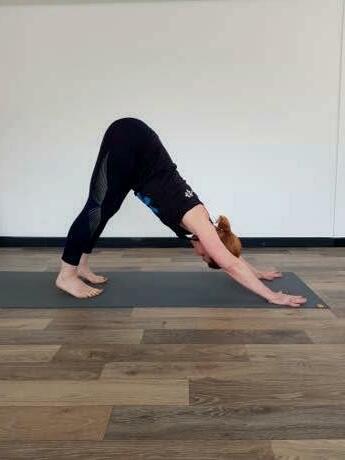

Think of some other themes for classes and chose a theme for your class. What are your peak poses?
After we have spent time arriving, warming and building to the peak of the class what’s next?
How do we ensure that we have designed a class that is balanced? In Surya Namaskara the asana we practice naturally counter each other. Think about the bending forward into Uttananasa / standing forward bend, the bending back ward in Bujangasana / cobra pose and the inversion of Adho Mukha Svanasana / downward facing dog.
The peak poses we have chosen may have been from one particular asana family, for instance back bends so now, how do we intelligently design the last part of our flow?
We must think about the muscles and tissues that have been stretched or strengthened and allow them to move through their opposing action.
The word “Pratikriyasana” meaning of “opposite action” or “counter pose” prepares students to move into another direction, for example, from a forward bend into a backward bend. However, this can often cause injury if moving from strong variations of poses particularly if they have been held for long periods. We should therefore think about “neutralising” the body from the last pose before moving to another asana type. Here are few things to think about when designing the final part of the Vinyasa;
Is there a “rest” or period on stillness and levelling off after the main peak? This could be Balasana/ Childs pose, Tadasana /mountain pose or Savasana / surrender pose.
It is important that we keep the “attention” even when resting, we should keep the breath connection we have built, however we may need to calm it if a lot of heat and intensity have been built.
What direction has the spine been moving in during the peak? What direction do we now need to move?
What are the joint actions of the peak poses? What muscles surround those joints? Consider therefore what do we need to specifically release or stretch?
If adding specific “counter poses” what are the less challenging variations of these poses that we can move into first?
What are the possible contraindications when moving from one pose to another i.e. falling over due to blood pressure lowering, possible damage to ligaments etc?
Think of adding more restorative poses as the class is moving towards the close. Forward bending poses are excellent for this, again moving from simpler to more complex poses.
Can we use props to allow for greater release of tension, if so how?
If we take for example Urdhva Dhanurasana / Wheel pose, we should have opened up the hip flexors, chest, shoulders and abdominals, plus practiced less challenging back bends such as Bhujangasana / cobra before reaching this peak pose.
A period in savasana in order to level off the body should be practiced before moving into simple twists, then into Balanasa /Childs pose, then deeper forward bends.

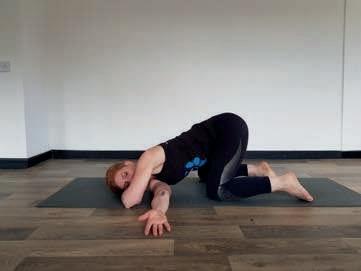

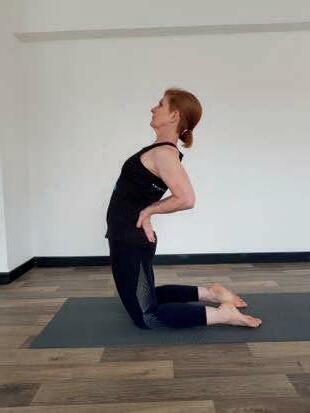
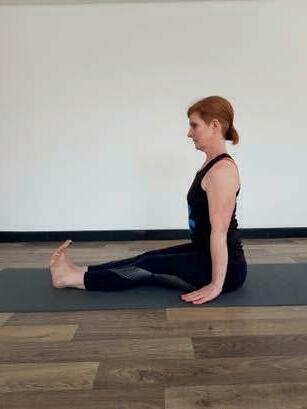



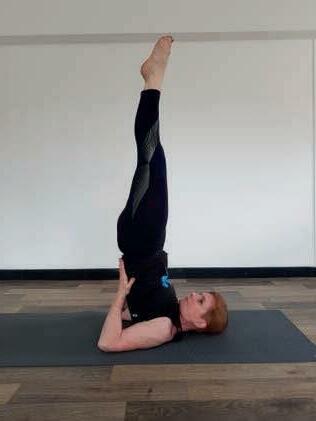
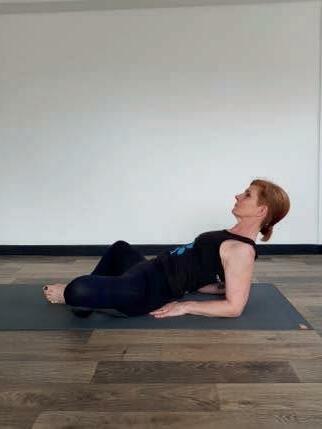
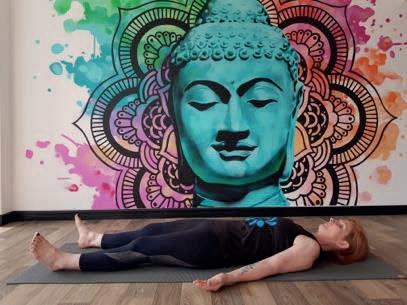
What are the neutralising and counter poses you would use for your themed class.
A balanced asana practice perfectly prepares the body for pranayama and meditation, however as a vinyasa class structure is usually one hour, it leaves little time for this.
The pranayama of Ujjayi is usually practiced throughout the class having the effect of bringing concentration to the mind. However if there is time, other pranayama can be taught as well as a short period of meditation as rest in savasana.
One of the ideas of practicing savasana at the end of the class is that it allows us to assimilate the effects of the practice, it completes the practice and allows us to connect the body and mind. It maybe throughout the class we are offering short periods of savasana particularly after a challenging set of poses.
Here is an example of how you may choose to close the class:
Take a few minutes in Savasana, teaching a simple body scan or focusing on sensations of the breath.
Seated Pranayama, Nadhi Shodhana or Kapalabhati or simply sitting with focus on the breath.
A short closing mediation, chanting the “AUM” or a simple chant .
Concluding with a re-connection of any intensions set at the start of the class or reflecting on how do we feel now?
Can we take this feeling with us as we move into our next sequence off the mat?
How will you close your class?
What are the precautions of the pranayama you want to teach and the modifications?
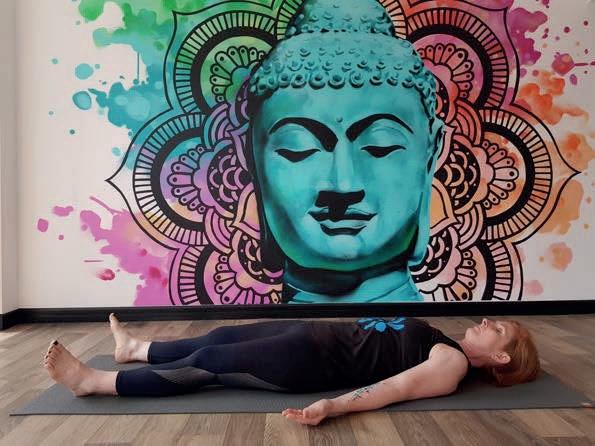
As vinyasa tends to move more quickly than other forms of yoga, we must remember the aim of yoga, this can mean many things to many people.
In the Yoga Sutras of Patanjali chapter 1, the first sutra is “Now the exposition of yoga is being made”. In this he explains that mere philosophy will not satisfy us, we cannot reach this goal of yoga by mere words alone – without practice nothing can be achieved.
In the second sutra we have one of the most famous quotations of what yoga is “Yogas Citta Vrtti Nirodah”.
Or “The restraint of the modifications of the mind-stuff is yoga”. This is the goal of yoga.
If you have control over your thoughts and change them as you would like, then you have no boundaries. We should therefore think of vinyasa as a “moving meditation”. As we follow the breath, our mind becomes quieter and we chose to let go of the sense of “me” or “I” which is our attachment to the ego. Reminding students throughout the practice that yes, they should be feeling challenged in the pose, but they should still be able to breathe in a steady and controlled way. Vinyasa should be designed in such a way that the mind can feel calm, as one pose flows into another like a beautiful dance.
“Sthira Sukham Asanam” from book two in The Yoga Sutras means “Asana is a steady, comfortable posture”. This is our aim in all our yoga asana, and this is where yoga has the capacity for selftransformation and healing.
This also helps us to recognise that when we practice, we should be able to feel the challenge in the pose, but also feel the sense of ease that comes from regular practice and a strong breath connection. As teachers, we can use this as a “check in “with our students. “Can you feel it?” “Now find the ease”. “Can you breathe or are you holding the breath?”
By adding cues like this we can avoid physical injury as well as mental chatter for our students. If a student is struggling with a posture, they maybe in pain or very unsteady on their feet and feeling foolish. Therefore, they are more likely to go back to their agitated, questioning mind and quickly lose the sense of being in a moving meditation. It is as important therefore that we not only design classes that are interesting and transformational, but also safe and effective.
Here are some things to be aware of when designing safe and effective classes:
Can the asana you have chosen be modified, and progressed and do you know how?
More importantly, can you teach the asana visually, verbally and kinaesthetically?
Are the transitions between asana safe? Do they flow?
What are the possible contraindications and how do you avoid them?
Have you practiced the sequence yourself, does it work?
Have you warmed up and mobilised effectively for the class ahead? Does this include all the joints being used? For example, the wrists are used a lot in vinyasa so it’s important they are affectively mobilised.
How have you introduced props such as blocks, bricks, belts, chairs the wall to make the class more accessible for all?
Have you allowed for rest periods in the class, whilst allowing the mind to stay calm and not disrupt the flow?
Have you included regular rest periods in the class or restorative poses such as Utthita Balasana / Extended child’s pose if students need them?
Have you steadily built the class up, designed a peak and bought them down safely and effectively?
What are the contraindications and prohibitions for the poses in your class and how can you modify and progress them?
The practice of pranayama, “pra “meaning “life force” or “vital energy” and the word “ayama” meaning to “stretch” or “ extend” is associated with the “Pranamaya kosha” or “energy body”.


This is one of the five “Koshas” or “sheaths” that according to yogic physiology, makes up the human framework. These account for the different dimensions or aspects of human existence. Together they are known as the “Pancha Maya Kosha”.
The pranamaya kosha or energy body is the life energy that governs biological processes, from breathing, to circulation of blood and digestion. Pranayama replenishes the vitality of this kosha.
Practises such as Nadhi Shodhana / alternate nostril breathing, Ujjayi breath and Kapalabhati help to cleanse and replenish this layer as well as bringing a sense of Pratyhara/withdrawal of the senses and Dharana /one pointed concentration. These all lead us towards Dhyana/meditation.
The sound this pranayama makes is like a soft hissing sound, the sound of the ocean waves or a slight snore. Calms the mind and soothes the nervous system.
Used mainly in Ashtanga Vinyasa Krama to “heat the blood” and build up pranic store house.

Sit upright in a comfortable seated meditation pose, use props for support.
Allow the spine to feel long but recognise the natural curves.
Chin is slightly tucked into the throat to allow a slight restriction.
Place one hand upturned on the thigh; the other hand is placed palm facing the mouth.
Inhale through the nose, imagine making a “Sa” sound.
Exhale through the mouth making an audible “Ha” as if steaming up a mirror, blowing on the palm of the hand. The sound is like a hissing, ocean waves or slight snoring sound.
Repeat three times.
On the fourth round halfway through exhaling through the mouth stop halfway, continue but with the mouth closed so the exhale is nasal.
Once you have tuned into the sensation continue to exhale through the nose.
Once you are familiar with the exhale sound, cultivate the same sound on the inhale.
Modifications: Continue to breath with mouth open on the exhale until you feel comfortable to progress.
Contraindications
Stress and anxiety
Panic attacks
High blood pressure
Pregnancy
Heavy cold or nasal issues
People with a hot constitution
Practise teaching Ujjayi Pranayama.
As well as being a pranayama this is also one of the six kriya’s or purifying techniques known as the “Shat Karma’s” or “Six actions”. It energises and warms the body through rapid active exhalation.

Sit upright in a comfortable seated meditation pose, use props for support.
Allow the spine to feel long, but recognise the natural curves
Take two full yogic breaths, as you exhale focus on tightening the abdomen.
Inhale naturally or “passively” allow the abdomen to relax.
As you exhale “actively” tighten the abdomen as if “snapping” it and forcing the breath out of the nose.
There is a slight pause to allow for the next passive inhale.
This can be repeated in “rounds” or minutes depending of the level of the class. Beginners may start with one round of five breaths, this can then be increased as practice deepens.
Modifications: Encourage students to place hands on their abdomen to connect with the passive exhalation, they may want to continue with this until they feel ready for the practice. A slow version of the pranayama should be taught first, then those not wishing to experience the full practice can feel included. Or simply siting observing the breath for those not wishing to take part or those with the following contraindications.
Contraindications
Not to be practised during pregnancy.
High blood pressure.
Issues with the eyes, ears or sinus blockages.
Recent abdominal surgery or hernia.
Heavy cold.
Practice Kapalabhati Pranayama.
This practice balances the energy channels and induces feelings of tranquillity and calmness
Sit upright in a comfortable seated meditation pose use props for support.
Allow the spine to feel long but recognise the natural curves.
Place the left hand in “chin mudra” it is left resting on the thigh.

The right hand is placed in either “Vishnu or Nasakagra Mudra” or the thumb and fingers of the right. hand is used to navigate the nostrils.
The right nostril is closed by the right thumb as the left nostril is “emptied”.
Once empty inhale though the left nostril, this is then closed by the right finger or fingers.
Exhale through the right nostril, once empty inhale again through the right.
The right is then closed by the right thumb.
Exhale through the left nostril.
This is one round.
This can be practiced for as many rounds as the class require, depending on ability.
The length of the inhales and exhales can range from four counts upwards or for however long the student feels able.
Modifications: Start with encouraging students to sit and observe breath moving in and out of each nostril. They can then build up to the full practice when they feel ready.
Do not practice with Ujjayi pranayama.

Stress and anxiety.
Heavy cold.
What mudras can be used with Nadhi Shodhana? Practice teaching them.


The Bandhas are perhaps one of the most difficult aspects of yoga practice to grasp. Although we may be able to feel them physically, they are both energetic and physical. Bandhas should be practised and mastered individually before putting them together along with mudra and pranayama. This is one of the main reasons why, as teachers we should personally practice them for some time before teaching them to our students.
The word Bandha in Sanskrit means to “lock” or “tighten”. Physically we can feel this in our bodies. However, in the energy systems of yoga, bandhas are locks which redirect energy for spiritual awakening. We are after all not just physical beings, we are made up of thoughts and emotions and we all have some sense of spirituality, or a connection to an original source, be it scientific of spiritual.
Mula Banda/Root Lock“One makes the Apana, which goes downwards, go up by contracting forcefully. This is called Mulabanda”
Hatha Yoga PradipikaPrevents the downward flow of energy and stabilise the pelvis and the spine.
Sit upright in a comfortable seated meditation pose use props for support.
Allow the spine to feel long but recognise the natural curves.
Heel pressed into perineum.
Contract the muscles around the pelvic floor, lift and tighten.
Hold the contraction.
Release slowly when ready.
Contraindications: Menstruation, anxiety.
“With the use of this bandha, the great bird prana is made to fly up”
Directs the upward flow of energy, allows a stronger connection to the core muscles and hip flexors and stimulates the digestive fire.
Full bandha to be practiced on an empty stomach.
Sit upright in a comfortable seated meditation pose use props for support.
Allow the spine to feel long but recognise the natural curves.
Heel pressed into perineum.
Place the palms of the hands flat on the knees.
Close the eyes and relax the whole body.
Exhale fully, contract the abdominal muscles inward and upward.
Lower chin to chest “Jalandhara Bandha”.
Retain the breath outside the body for as long as you can with no straining.
Then release the abdominal lock.
Lift the chin from the chest and inhale.
This can be repeated once comfortable breathing has returned.
Contraindications: Pregnancy, abdominal problems and recent surgery, high blood pressure, heart disease, eye issues and glaucoma .
Practice teaching Mula Bandha.

“After contracting the throat, place the chin firmly on the heart. This is called Jalandhara Bandha. It destroys old age and death”
Encourages mental relaxation, relieves stress, anxiety and reduces anger. Bring balance to thyroid function and helps to regulate metabolism. Helps in the development of a meditative state.
Sit upright in a comfortable seated meditation pose, use props for support.
Allow the spine to feel long but recognise the natural curves.
Place the palms of the hands flat on the thighs.
Close the eyes and relax the whole body.
Inhale slowly and deeply and retain the breath inside.
As you retain the breath lower chin towards the chest as the chest lifts to the chin with the shoulders hunched.
Press the hands into the thighs firmly.
Keeping the breath inside the body for as long as is comfortable, do not strain.
When ready relax the arms and shoulders, lift the chin form chest and inhale.
This can be repeated when comfortable breathing has returned.
Contraindications: Cervical (neck) conditions such as spondylitis, high blood pressure, vertigo, anxiety, heart disease, high intercranial pressure, pregnancy.
Practice teaching Uddiyana Bandha.

Creates balance and stability, strengthens the arches of the feet. Allows the lower body to feel more engaged and grounded.
Standing upright in Tadasana/ Mountain pose or Samasthiti / to be present, to start again, rooted, balanced.
Pick up the toes and root down through the mound of the big and little toe equally. Connect with the heel pressing into the ground. Place the toes back down one by one “spreading” them wide. Lift the inner arches and ankles as if trying to “place two fingers under the arch”. Ensure that you neither “roll in “or “roll out” too much . Feel the weight is evenly distributed in the foot. Feel the shins engage and the thigh bones lift.

This is one of the more minor bandhas however it can have quite dramatic results mainly in standing poses.
Practice teaching Pada Bandha.

In yoga we use pranayama/breath control to cultivate and direct prana/energy around the body. From breath comes bandha so without an awareness and development of the breath there can be no bandha. As mentioned above bandhas are generally practiced seated, thus helping us to move closer to the ultimate sate of Samadhi/ bliss state from Dhyana / mediation. However, when we move in asana they can not only continue to move energy upwards and create a focal point for concentration. They can also help to create a physical “lifting” creating an internal support for the spine and core muscles. This can have the affect of making us feel “lighter” whilst simultaneously allowing us to feel “firmer”.
In vinyasa practice we only really connect with the idea of a “half” bandha. Using teaching points such as “draw the lower belly towards spine as if practicing Uddiyana bandha “or “lift up through the pelvic floor muscles as if to practice mula bandha. Teachers trained in Ashtanga Vinyasa Krama or certain other yoga lineages will have more knowledge and be more used to teaching the bandhas in Vinyasa, for now “the idea” or “feeling “of tightness maybe enough for most students to understand. Ideally the bandhas should be practiced on their own as above before introducing them into the class.
One of the main reasons there are so many yoga teachers and styles of yoga is because there are so many people wanting to take part in this wonderful practice. As teachers we can spend hours planning our classes, deepening our knowledge and doing our practice. However, it is so important that we remain authentic.

This means being real, true and genuine. Taking influence from others is great, yoga after all has been passed down through generations. Be your unique self, teach from the heart with the right intention, question, enquire, learn and develop, always.
Answer the following questions;
What makes you unique?
What can you add to your class to make it different?
“Yoga is the journey of the self, through the self to the self”
Bhagavad Gita
“Practice all is coming”
Sri K. Pattabhi Jo
Keil,D. 2014. Functional Anatomy of Yoga. First Edition. Chichester. Lotus Publications Satchidananda,SS. 1978. The Yoga Sutras of Patanjali. Ninth Edition. Buckingham USA. Integral Yoga Publications.
Stephens,M. 2012. Yoga sequencing. First Edition. Berkeley, California. North Atlantic books. Yogapedia.com. (2018) Sankalpa [online] Available at: https://www.yogapedia.com/definition/5751/sankalpa [Accessed September 2020]. http://yoga-ashtanga.net/ https://en.wikipedia.org/wiki/Yoga

YMCAFIT is one of the UK’s leading health, fitness and wellbeing specific training providers. It offers an extensive range of qualifications from Level 2 to Level 4.

To view YMCA FIT’s full range of qualifications please visit www.ymcafit.org.uk.
A: 111 Great Russell Street, London, WC1B 3NQ
W: www.ymcafit.org.uk
© YMCAfit is part of Central Young Men’s Christian Association (Central YMCA). Registered Charity no. 213121. Limited company registered in England no. 119249. Registered address 112 Great Russell St, London, WC1B 3NQ.